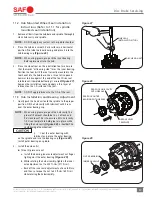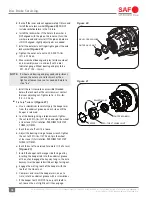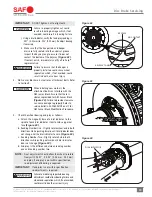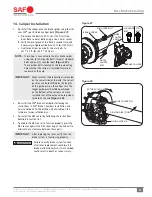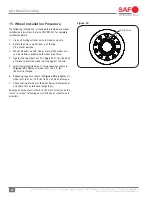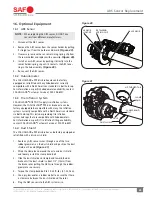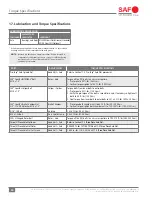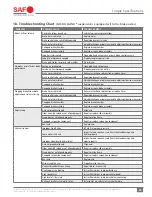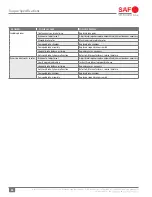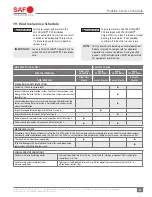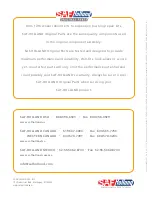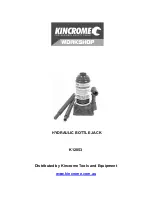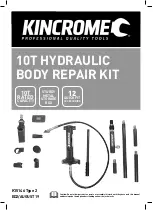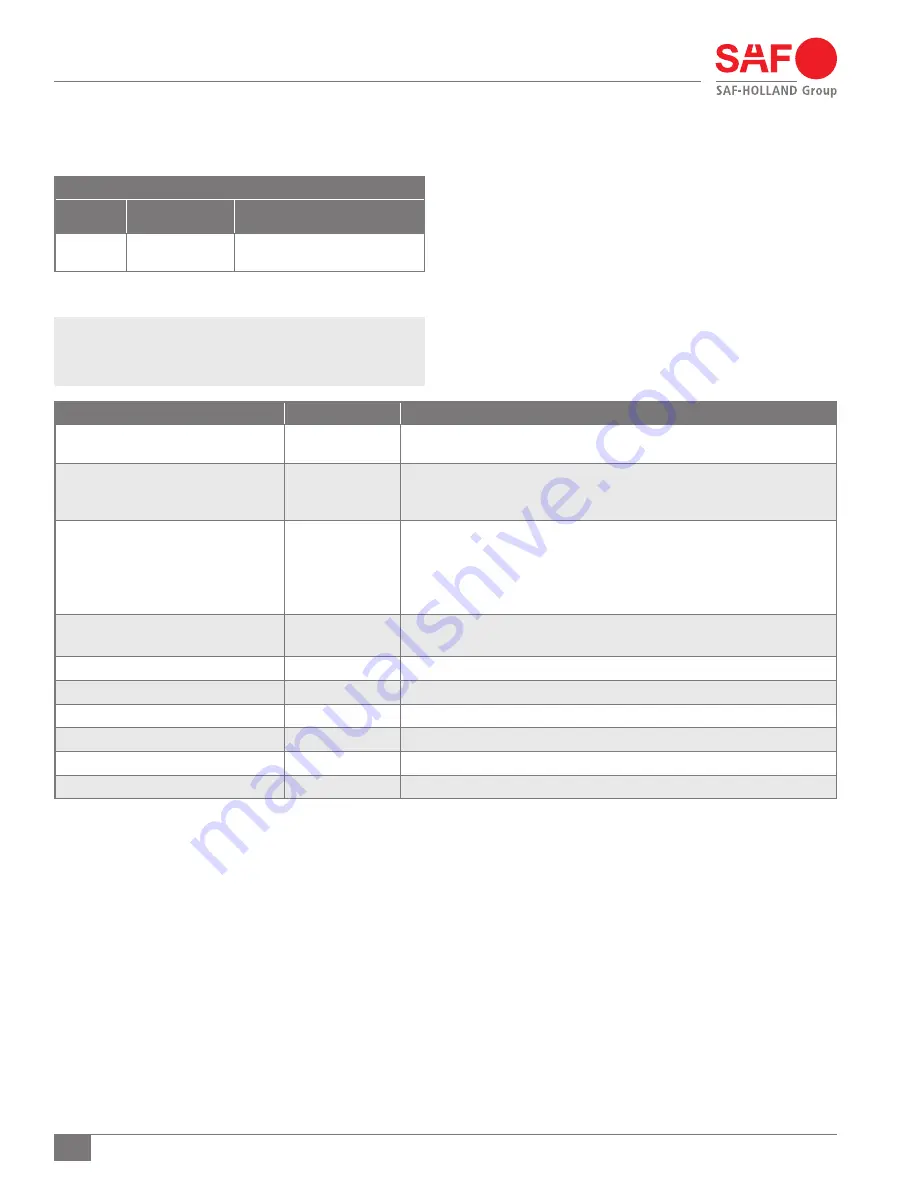
24
XL-SA20018UM-en-US Rev H · 2017-12-14 · Amendments and Errors Reserved · © SAF-HOLLAND, Inc., SAF-HOLLAND, HOLLAND, SAF, and logos are trademarks of
SAF-HOLLAND S.A., SAF-HOLLAND GmbH, and SAF-HOLLAND, Inc.
Torque Specifications
17. Lubrication and Torque Specifications
PART
APPLICATION
TORQUE SPECIFICATIONS
Pro-Torq
®
Axle Spindle Nut
Head Unit – Axle
Refer to Section 11.3, Pro-Torq
®
Axle Nut procedures.
SAF
®
Specific INTEGRAL
®
Bolt
M14 x 1.5"
Rotor – Hub
Torque all ten (10) bolts in a criss-cross pattern.
1. Pre-torque to 40 ft.-lbs. (54 N•m).
2. For final torque tighten to 140 ft.-lbs. (190 N•m).
SAF
®
Specific Caliper Bolt
M18 x 1.5
"
Caliper – Spider
Torque bolts from inner bolts to outer bolts.
1. Pre-torque to 88 ft.-lbs. (120 N•m).
2. Verify the pre-torque of the bolts a second time, and, if necessary re-tighten all
bolts to 88 ft.-lbs. (120 N•m).
3. Final torque from inner bolts to outer bolts to 331 ± 22 ft.-lbs. (450 ± 30 N•m).
SAF
®
Specific Brake Chamber Nut
5/8"-11 UNC Nylock or M16 x 1.5"
Brake Chamber
1. Pre-torque both chamber nuts to 60-75 ft.-lbs. (80-100 N•m).
2. For final torque tighten both chamber nuts to 130-155 ft.-lbs. (180-210 N•m)
5/16"-18 Bolt
Hub Cap
12-16 ft.-lbs. (16-22 N•m)
M8 x 1.25 Bolt
Dust Shield Clamp
20-25 ft.-lbs. (27-34 N•m)
SAF
®
U-Shaped Rotor Bolt
Rotor – Hub
Torque all ten (10) bolts in a criss-cross pattern to 190-210 ft.-lbs. (260-285 N•m)
Three (3) Piece Axle Nut Inner
Head Unit – Axle
Refer to Section 11.3 Three Piece Axle Nut.
Three (3) Piece Axle Nut Outer
Head Unit – Axle
200-300 ft.-lbs. (271-407 N N•m) 11.3 Three Piece Axle Nut.
Three (3) Piece Axle Nut Set Screws
Head Unit – Axle
16-20 in.-lbs. (1.8-2.2 N N•m)
11.3 Three Piece Axle Nut.
LUBRICATION SPECIFICATION
COMPONENT
SURFACE TO BE
LUBRICATED
LUBRICANT
Axle
Bearings and Hubs NLGI 00 Semi-Fluid Grease (Standard)
80/90 Gear Oil (Optional)
* Oil lubed bearings and hubs should remain lubricated with oil, grease lubed
bearings and hubs should remain lubricated with grease.
NOTE:
Intervals are based upon normal operations. Reduce intervals to
compensate for abnormal operations or severe conditions. During
inactive periods, sufficient lubrication MUST be performed for
equipment preservation.








